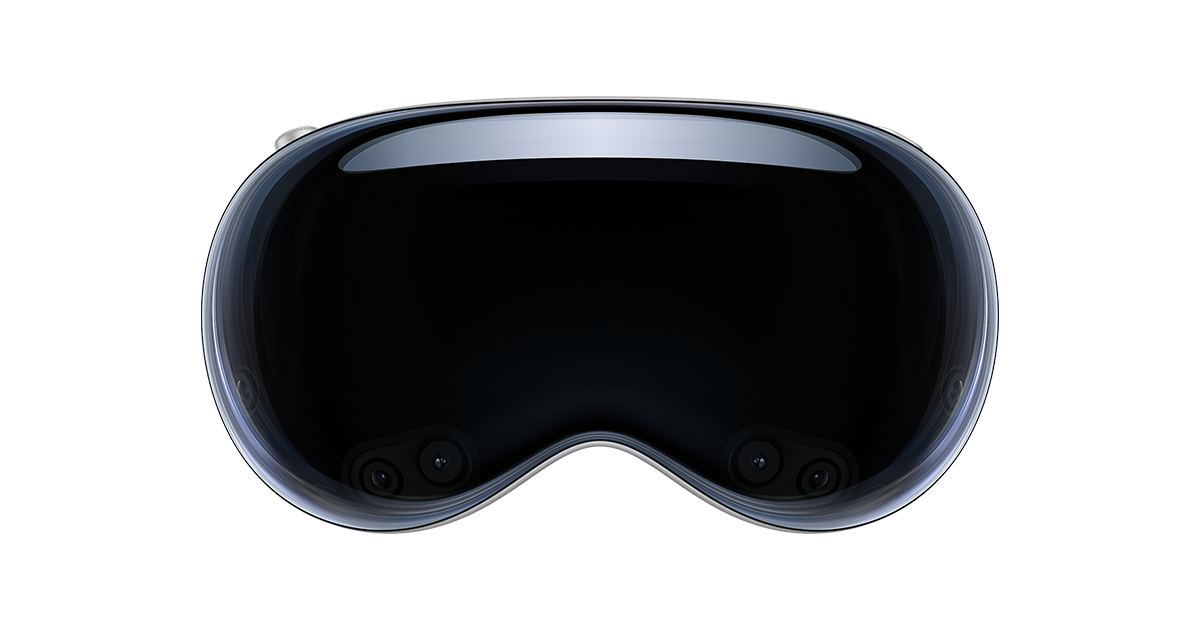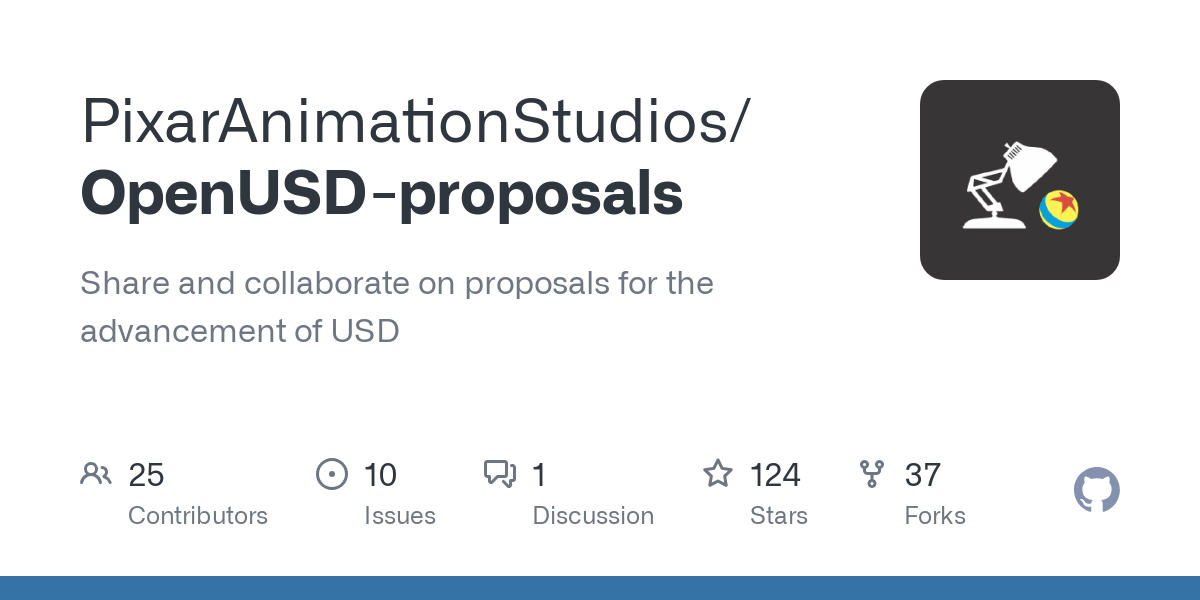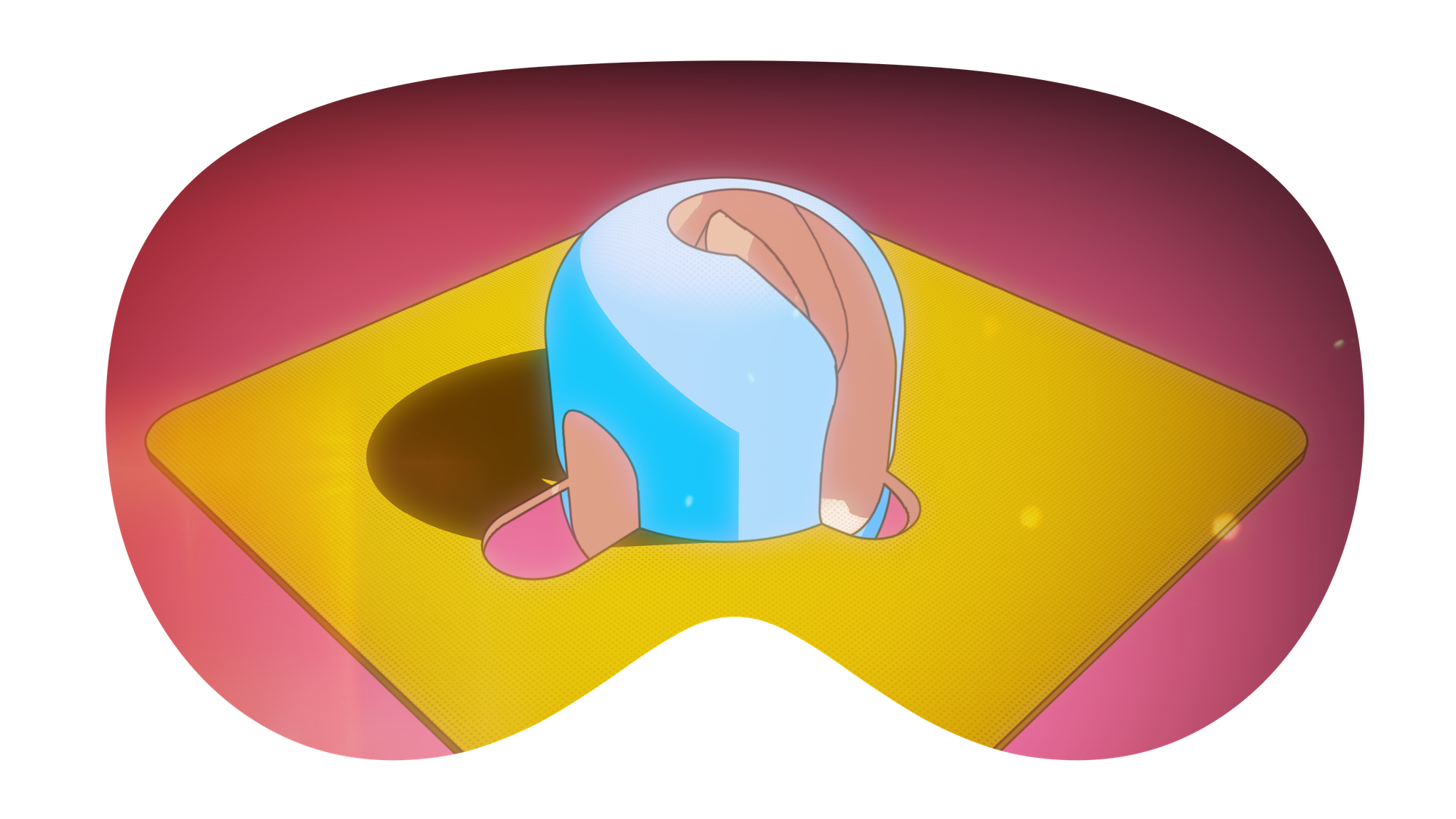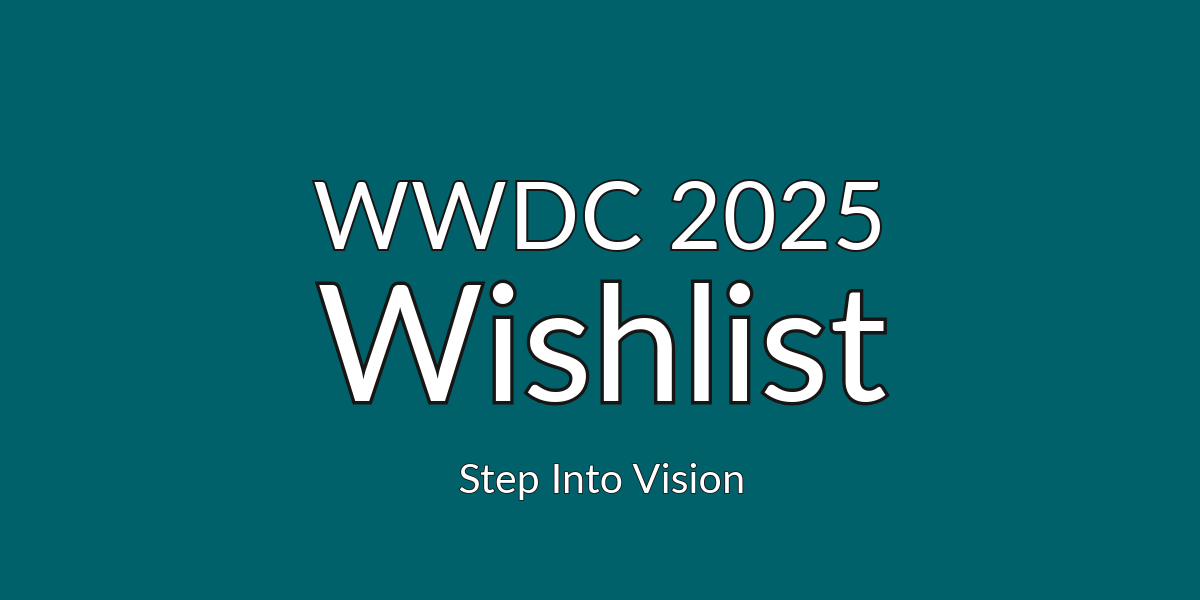Guide to the latest in Spatial Computing (WWDC25)
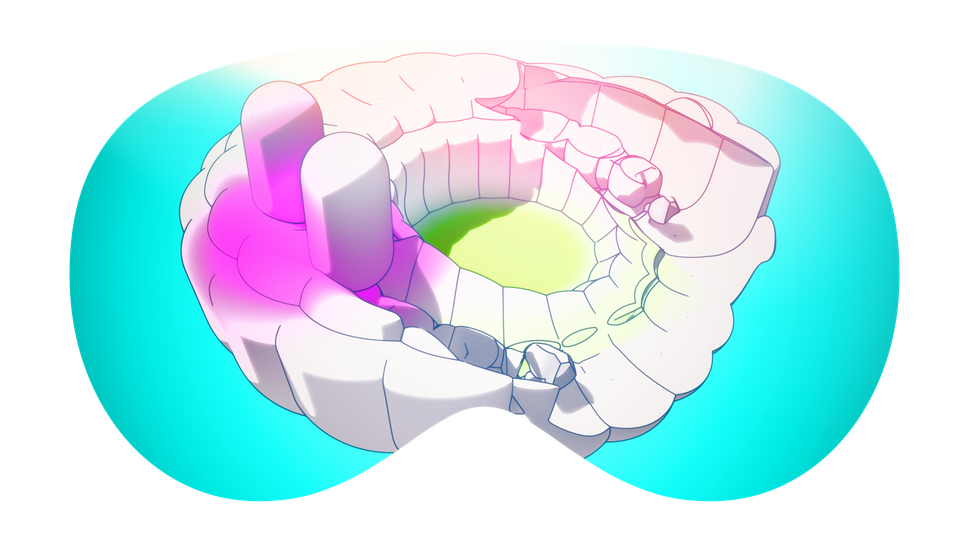
TL;DR
- Spatial computing is in a transitional phase: the technology is robust, but the market and use cases are still catching up.
- Apple’s approach is methodical, not flashy: rather than chasing hype, Apple is building the infrastructure—standards, APIs, specifications, developer tools—that will power the next wave of innovation.
- Enterprise and developer focus is key: the most exciting developments are taking place in business, education, and the creative industries, where spatial computing is already solving real-world problems.
- Cautious optimism is warranted: foundations are being laid for transformative experiences, but patience is required.
WWDC isn't just a show of new features; it's also a look at Apple's ambitions and decisions over the past year. Each session shows which theories and expectations were valid and which ones were not. In this way, WWDC validates the accuracy of the claims that appeared between events, giving us an understanding of what Apple is actually focusing on.
At First Glance
This year's WWDC had 116 sessions, compared to 2024's 119, but it ran 4 hours and 40 minutes longer (43h:32m vs. 38h:52m).
The Spatial Computing category had one less session than in 2024 (11) and a third fewer than in 2023 (15).
The ongoing trend continues to involve an increase in sample code and documentation. Spatial Computing maintained a similar amount of 26 sample code projects from 29 in 2024 (a long way compared to the original 2 in 2023), and the number of new articles has also remained stable since 2023, at about 20 per edition.
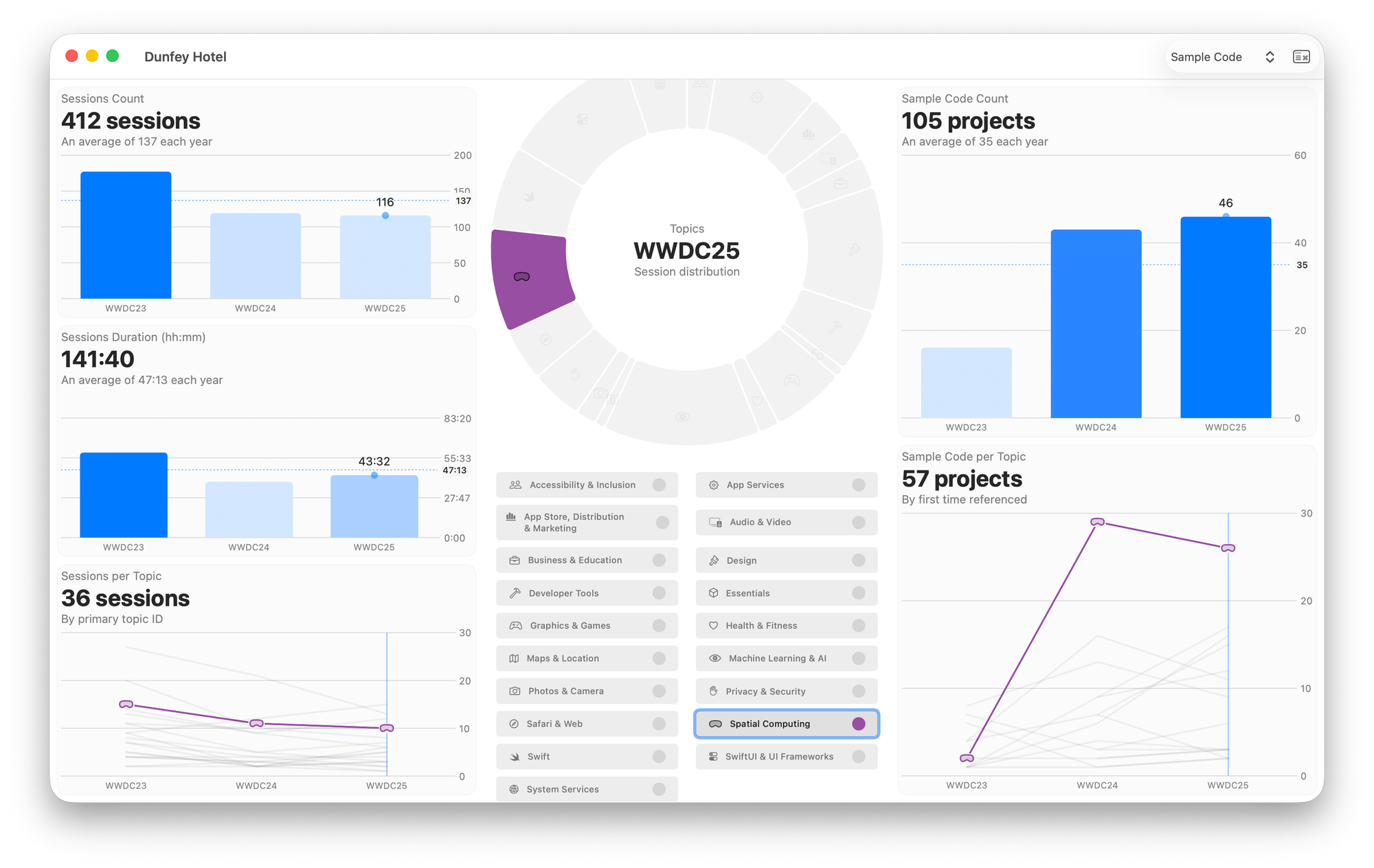
Spatial Computing as a Category
Spatial computing is turning into more than just a platform. It is becoming a high-level category, similar to business or education. This trend is visible in how WWDC sessions have been classified, with many moving to design, business, and audio-video categories.
Expectations
Apple Vision Pro was released in 2023, which represented a significant milestone. Strong user reactions quickly brought attention to the challenges app developers run into. For example, lack of critical mass and difficulty reaching customers. So, improvements that alleviated these problems, mixed with industry analysts' speculation for future hardware releases, were high on the wish list, as shown by social media and surveys.

It was assumed that the release of new devices (especially ones with smaller footprints) could speed up adoption, as people's positive views on XR being built into daily devices seem to be growing, but most of these wishes, along with more specific problems like high costs and ergonomic issues, remained unaddressed by Apple.
Instead, the signals shared at WWDC25 were very technical and included information on other aspects that Apple appears to believe could improve the platform's chances for success. Such are creating industry standards, establishing brand associations, and decreasing API complexity.
Focus
In 2025, the status of spatial computing presents an intriguing mix of innovation, challenges, and anticipation. A work in progress towards a pivotal moment. Also, developers have been heavily involved with native technology. Creating immersive experiences that push the boundaries of what is possible with Apple's technology.
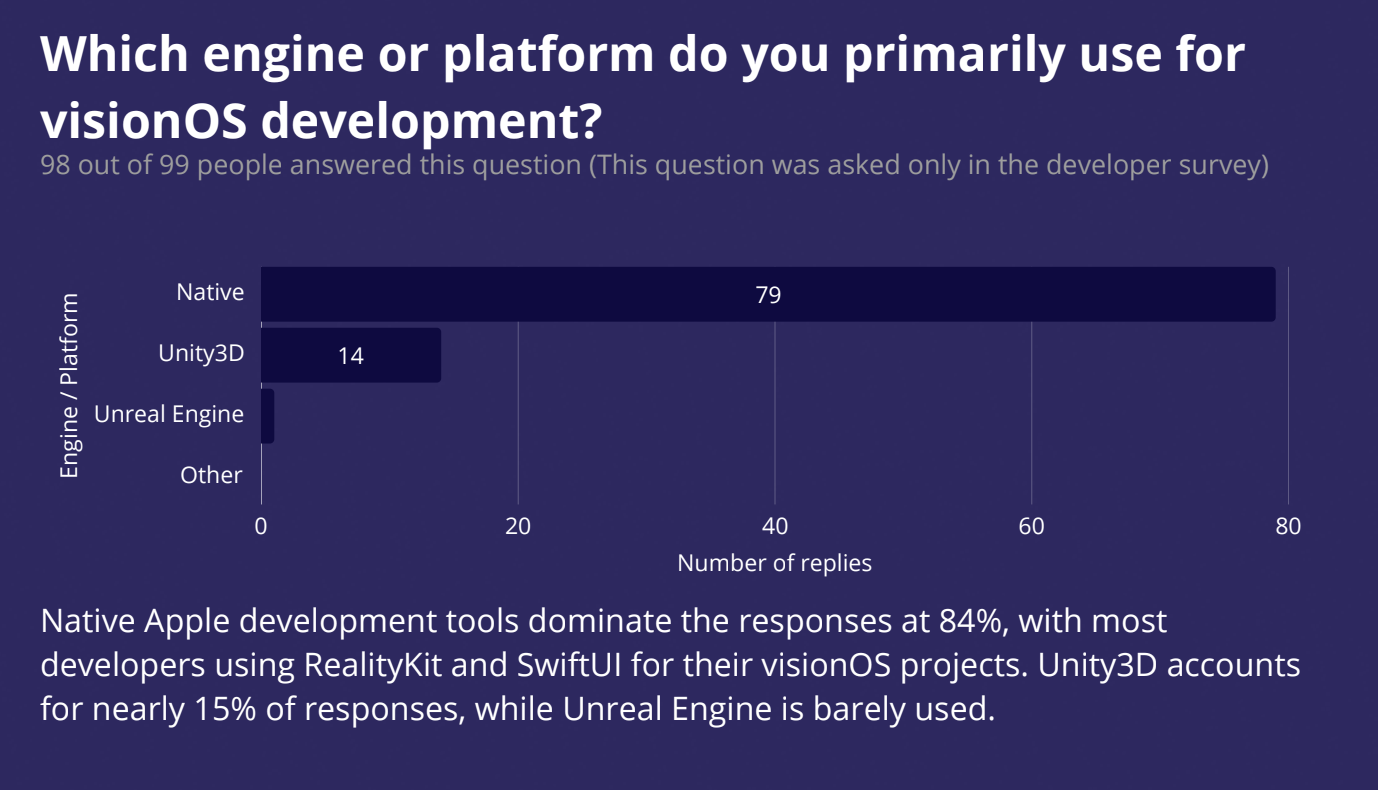
This trend set off a positive feedback cycle in which Apple increased community efforts by hosting online and offline workshops and labs, resulting in a plethora of feedback and a clearer picture of specific implementation challenges.
Developments
- The introduction of Nearby Sharing on top of the Group Activities framework makes the requirement for FaceTime optional and represents a significant breakthrough in collaboration. One feature that implements high-quality co-presence is just not something to be taken lightly.
- The absence of direct mentions of Unity or Unreal Engine suggests a shift towards custom rendering solutions. Metal rendering and WebGPU were highlighted, showcasing the potential for custom rendering engines.
- Apple's collaboration with Sony to support controllers such as PSVR2 and Logitech styluses broadens the device's range of applications. It's not just about gaming; it's about precision and control in various applications, from design to enterprise solutions. In fact, it is evident that visionOS's conceptualization of input is evolving, with Apple strongly focusing on maximizing efficiency and offering alternative input methods for those needing more precision. This is similar to how direct and multitouch paradigms have grown over the years.
- The USD Accessibility API Schema brings inclusivity patterns to the core of the pipeline.
- WebGPU & WGSL Shading Language will allow using Metal practices on the web.
- Apple Projected Media Profile (APMP), Apple Spatial Audio Format (ASAF), Apple Positional Audio Codec (APAC), Apple Immersive Video (AIVU), etc., are just impressive, foundational industry definitions.
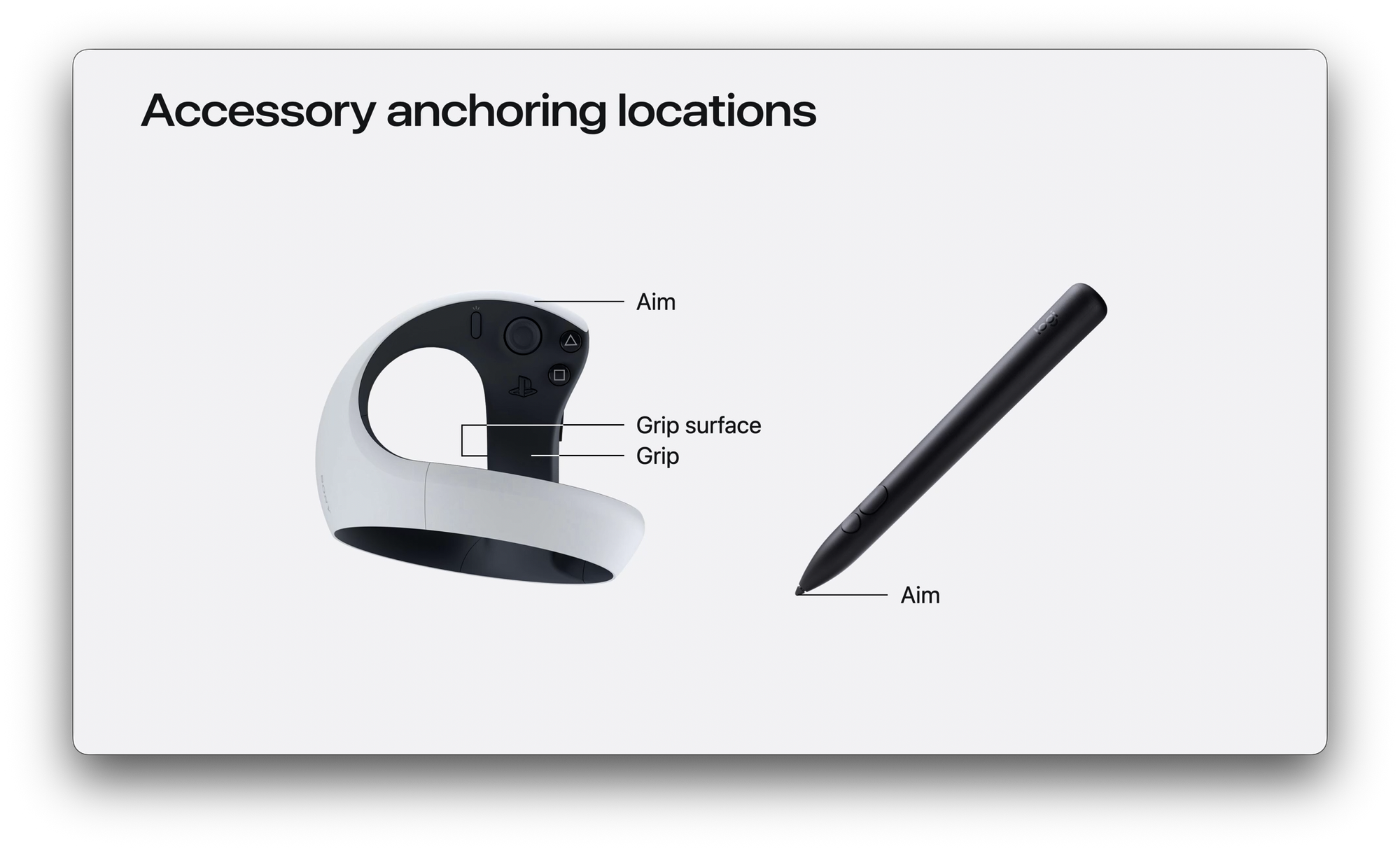
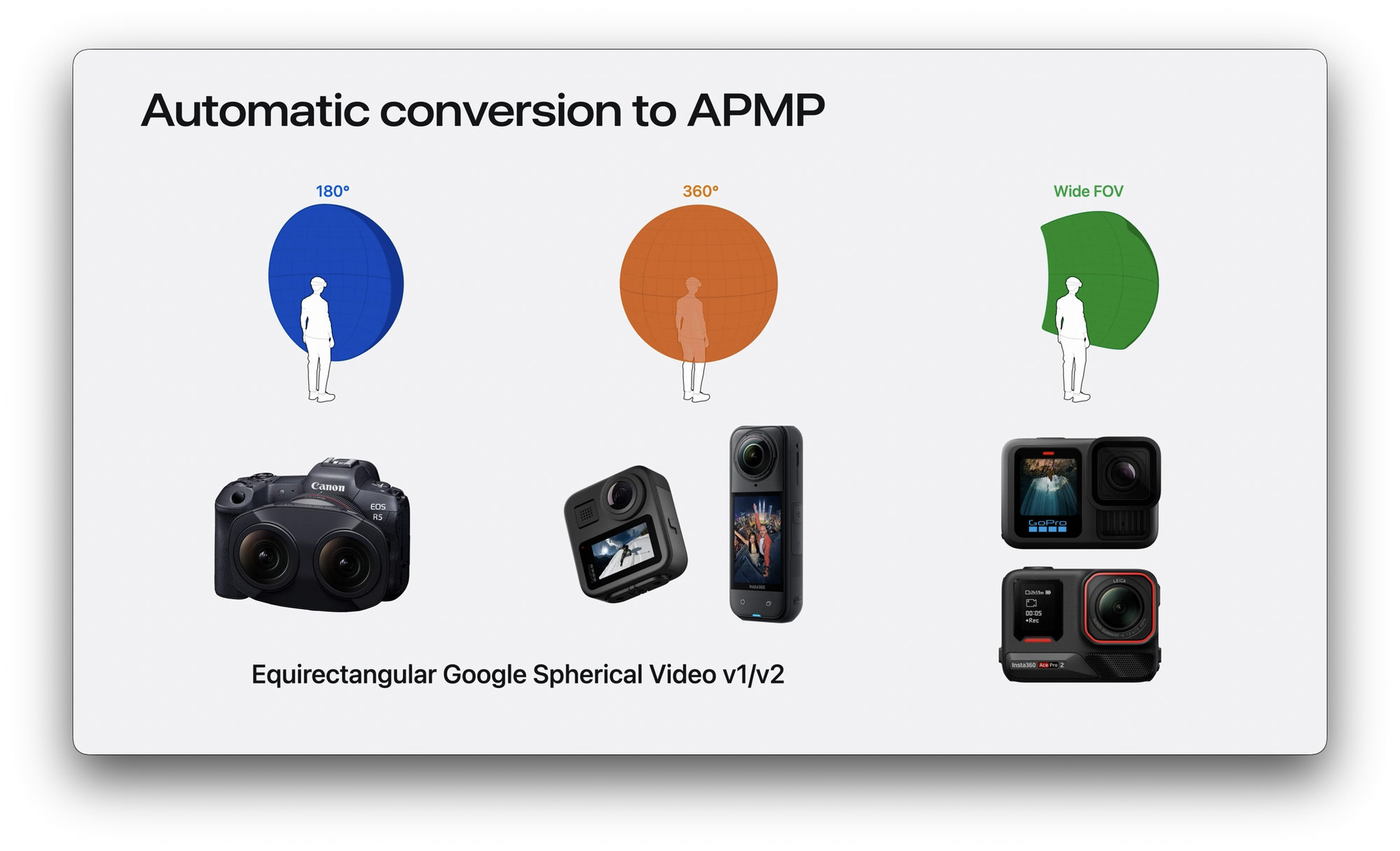
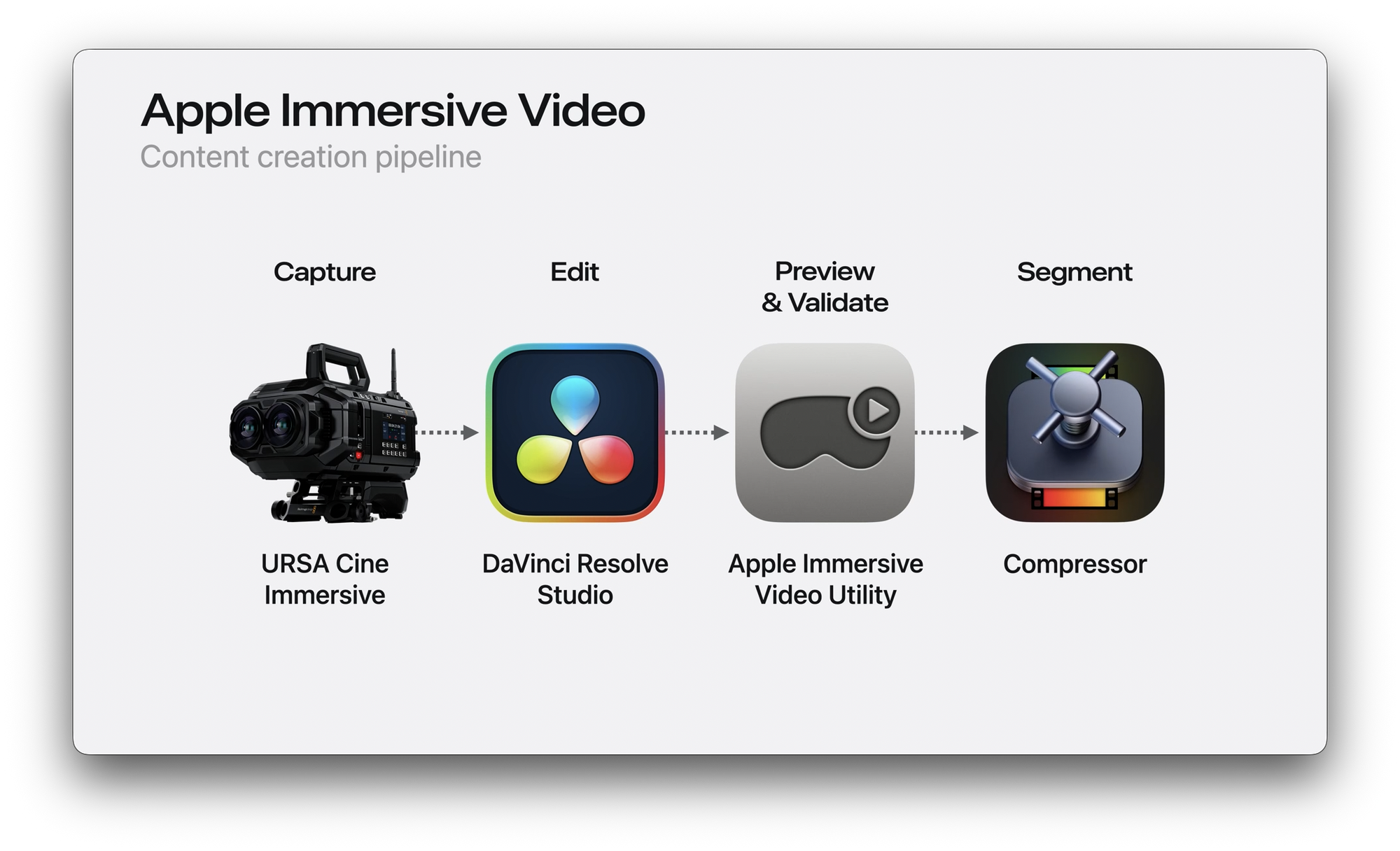
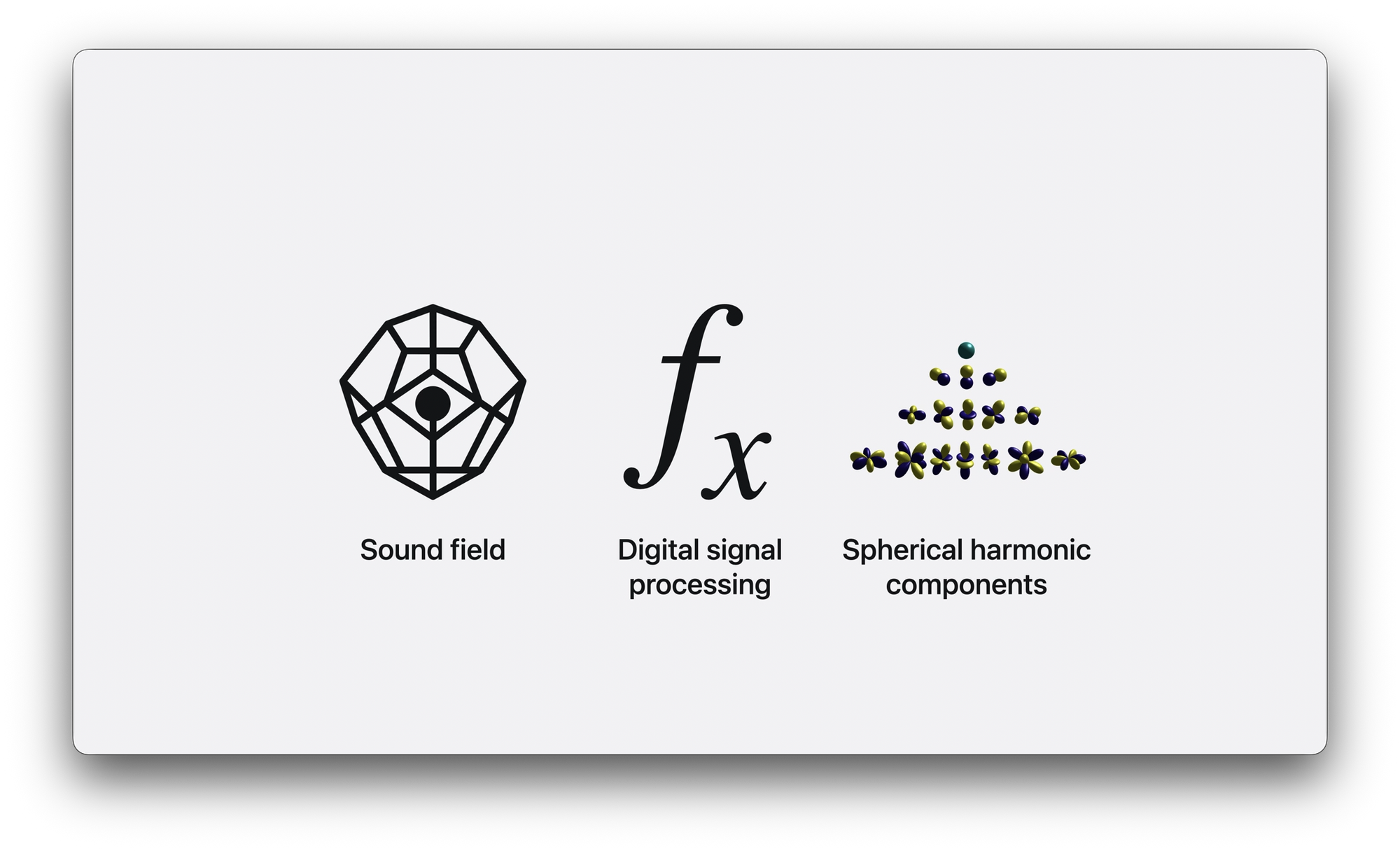
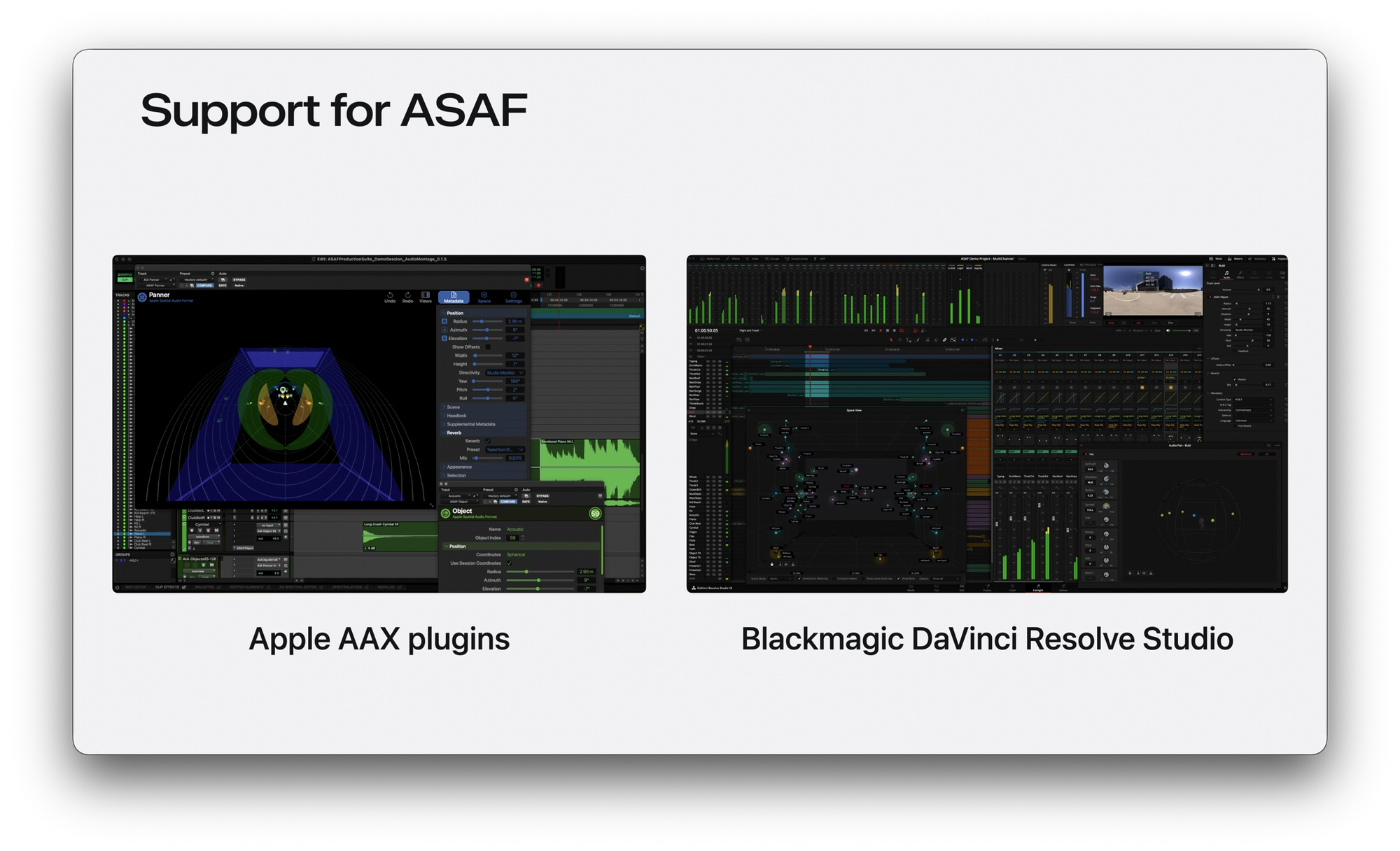
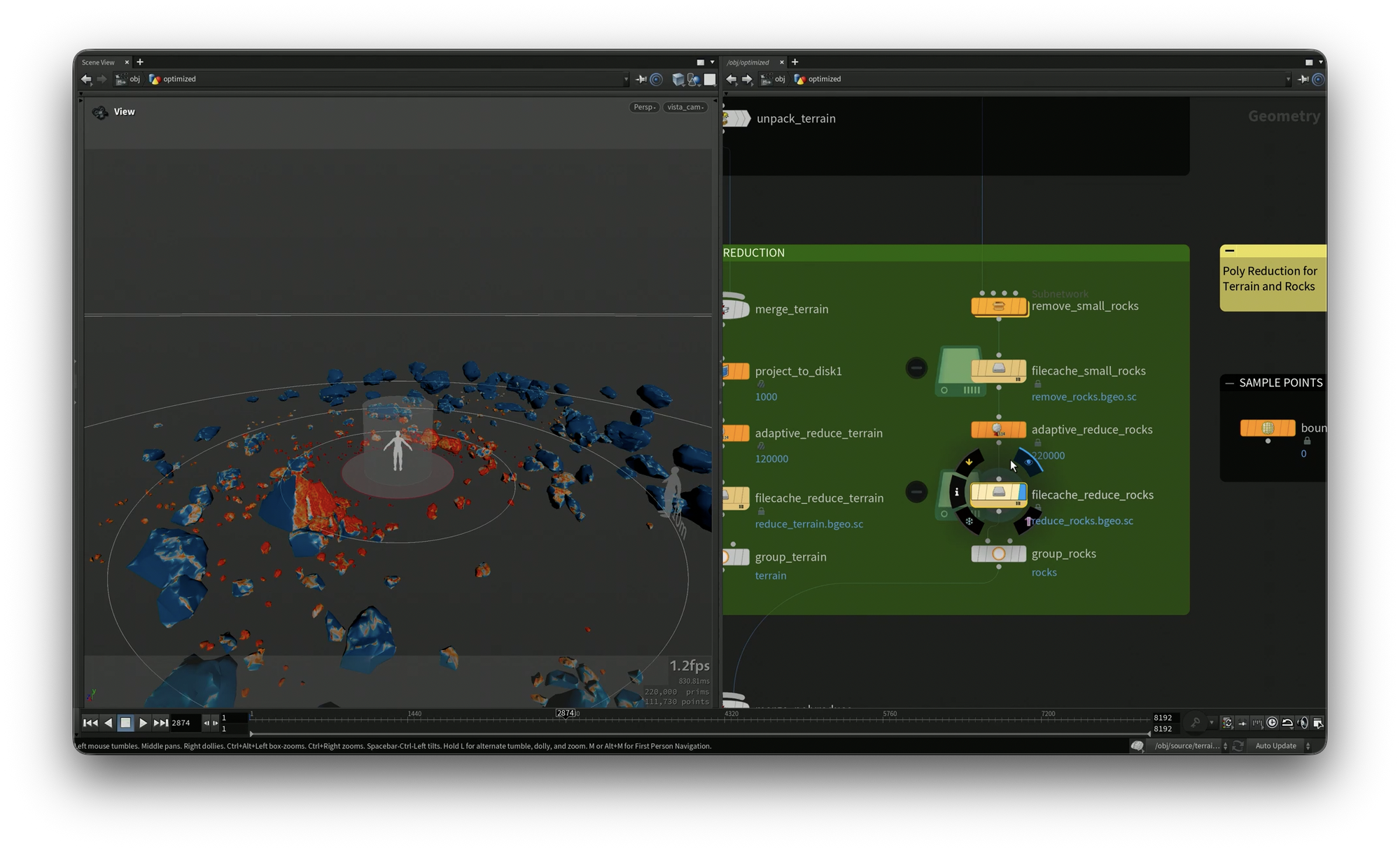
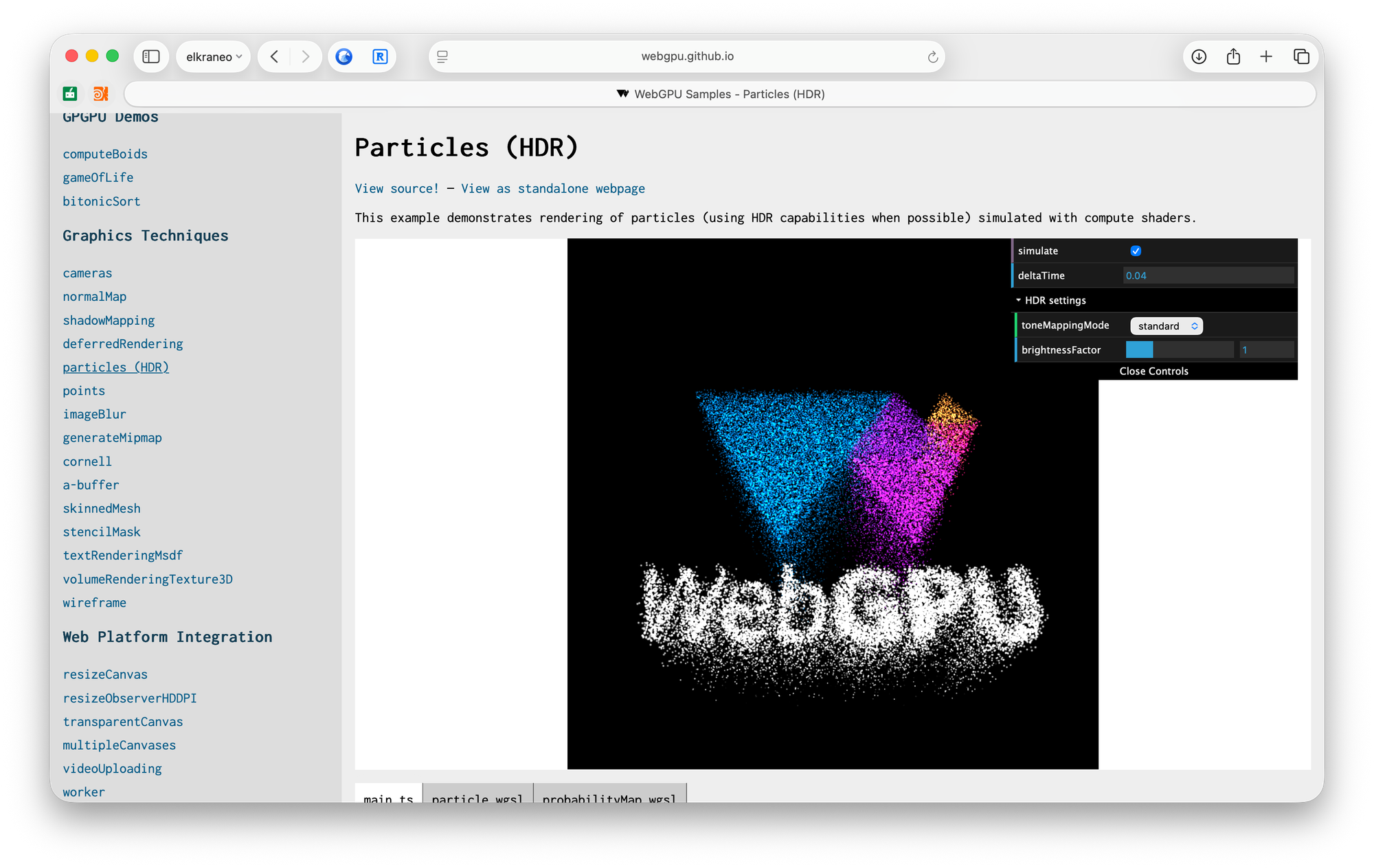
Some screenshots of technologies, definitions, and pipelines showcased this year.
Enterprise as a playground
The enterprise sector is quickly becoming an important incubator for the development of spatial computing solutions. The creation of enterprise entitlement features additionally serves as a testing ground for wider acceptance, and innovations in the definition and implementation of these functions may lead to new opportunities in accessibility and consumer-facing apps in the near future. The signals provided since the introduction of this program are that it is a controlled environment to gauge which features could be potentially unlocked for the general public and best used on B2C.
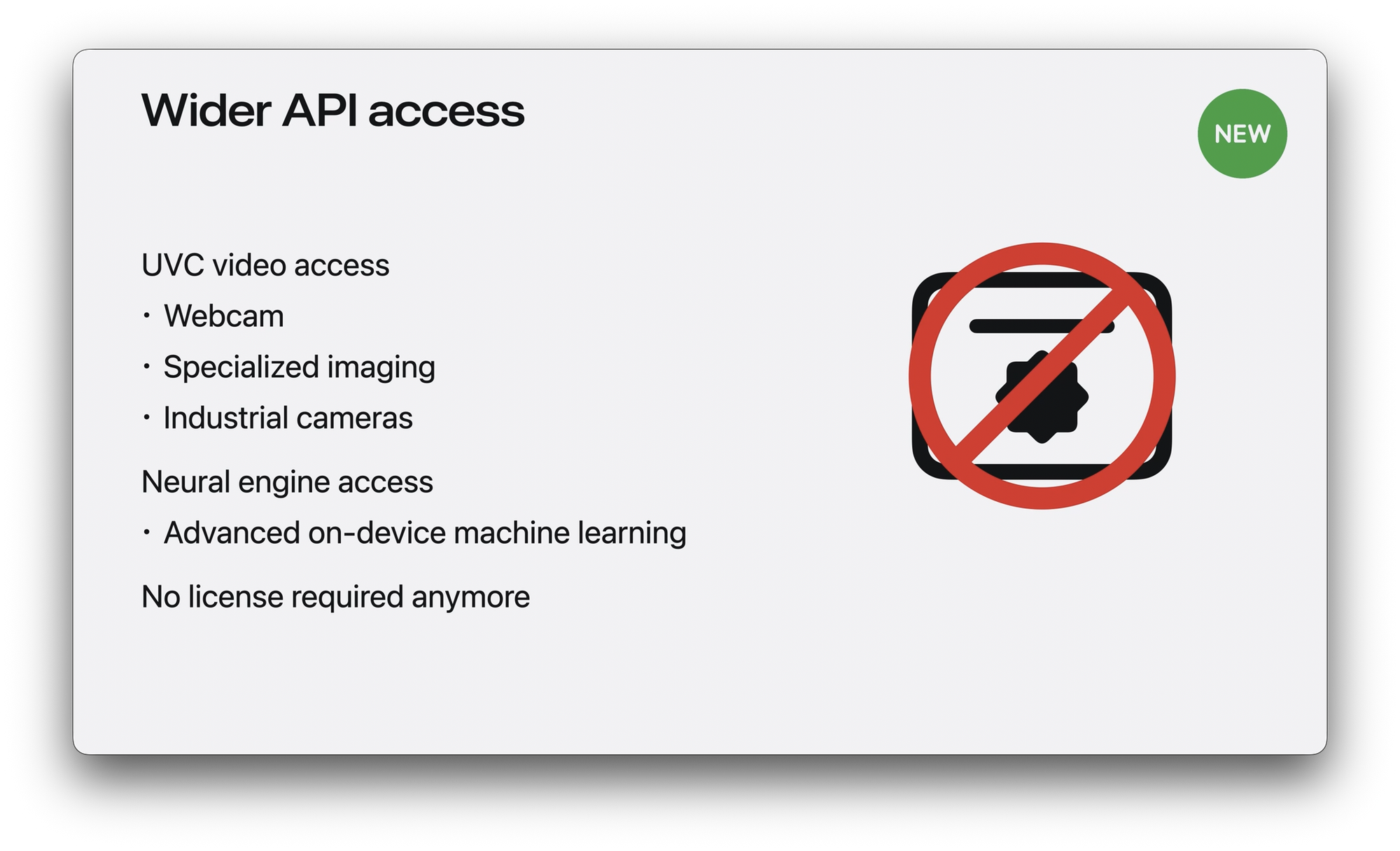
% xcrun createml objecttracker -s my.usdz -o my.referenceobjectSimple things, such as the ability to automate object tracking training, can make the difference between a nice idea and a successful project. Consider a museum that wants to use object tracking on some portions of its vast collections.
Forward
- The integration of SwiftUI with RealityKit is noteworthy. Composition of Apple frameworks lowers the entry point, expands the potential for new interactions, and reduces the cost of creating unique and well-behaved experiences.
- The focus on Intents and Widgets reinforces a transition to a future where context-aware systems proactively display information in a post-app environment.
- Apple's efforts in establishing industry standards are laying the groundwork for future dominance. These standards will likely shape the next decade of spatial devices.
The state of spatial computing in 2025 is one of cautious optimism. The industry is navigating a complex landscape, balancing innovation with practical challenges. As developers and companies continue to explore this frontier as true pioneers, the potential for transformative experiences grows by the day.
